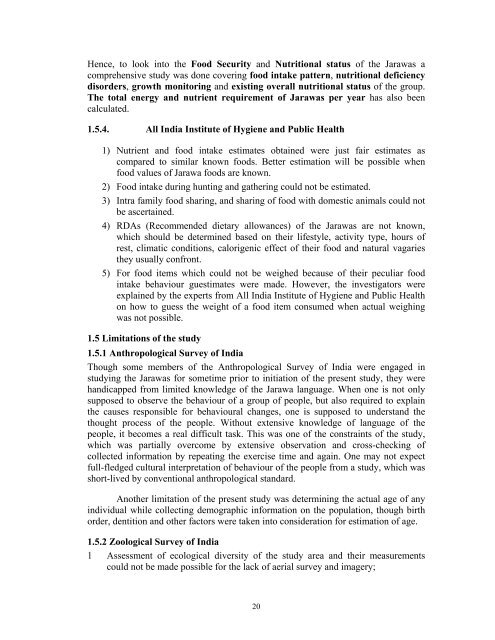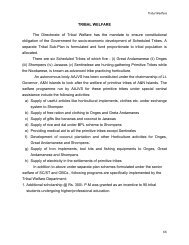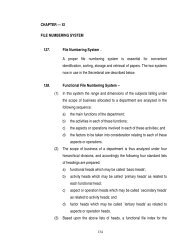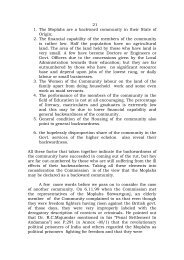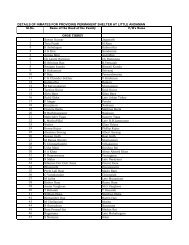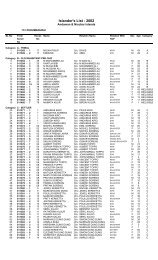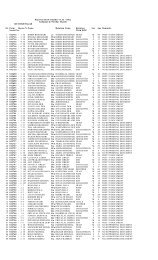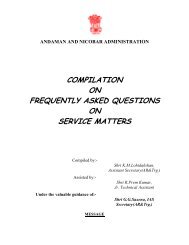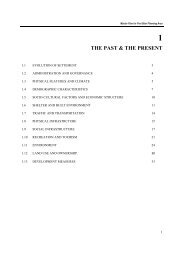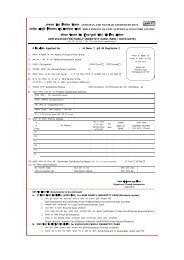1 Introduction - Andaman and Nicobar Islands
1 Introduction - Andaman and Nicobar Islands
1 Introduction - Andaman and Nicobar Islands
You also want an ePaper? Increase the reach of your titles
YUMPU automatically turns print PDFs into web optimized ePapers that Google loves.
Hence, to look into the Food Security <strong>and</strong> Nutritional status of the Jarawas a<br />
comprehensive study was done covering food intake pattern, nutritional deficiency<br />
disorders, growth monitoring <strong>and</strong> existing overall nutritional status of the group.<br />
The total energy <strong>and</strong> nutrient requirement of Jarawas per year has also been<br />
calculated.<br />
1.5.4. All India Institute of Hygiene <strong>and</strong> Public Health<br />
1) Nutrient <strong>and</strong> food intake estimates obtained were just fair estimates as<br />
compared to similar known foods. Better estimation will be possible when<br />
food values of Jarawa foods are known.<br />
2) Food intake during hunting <strong>and</strong> gathering could not be estimated.<br />
3) Intra family food sharing, <strong>and</strong> sharing of food with domestic animals could not<br />
be ascertained.<br />
4) RDAs (Recommended dietary allowances) of the Jarawas are not known,<br />
which should be determined based on their lifestyle, activity type, hours of<br />
rest, climatic conditions, calorigenic effect of their food <strong>and</strong> natural vagaries<br />
they usually confront.<br />
5) For food items which could not be weighed because of their peculiar food<br />
intake behaviour guestimates were made. However, the investigators were<br />
explained by the experts from All India Institute of Hygiene <strong>and</strong> Public Health<br />
on how to guess the weight of a food item consumed when actual weighing<br />
was not possible.<br />
1.5 Limitations of the study<br />
1.5.1 Anthropological Survey of India<br />
Though some members of the Anthropological Survey of India were engaged in<br />
studying the Jarawas for sometime prior to initiation of the present study, they were<br />
h<strong>and</strong>icapped from limited knowledge of the Jarawa language. When one is not only<br />
supposed to observe the behaviour of a group of people, but also required to explain<br />
the causes responsible for behavioural changes, one is supposed to underst<strong>and</strong> the<br />
thought process of the people. Without extensive knowledge of language of the<br />
people, it becomes a real difficult task. This was one of the constraints of the study,<br />
which was partially overcome by extensive observation <strong>and</strong> cross-checking of<br />
collected information by repeating the exercise time <strong>and</strong> again. One may not expect<br />
full-fledged cultural interpretation of behaviour of the people from a study, which was<br />
short-lived by conventional anthropological st<strong>and</strong>ard.<br />
Another limitation of the present study was determining the actual age of any<br />
individual while collecting demographic information on the population, though birth<br />
order, dentition <strong>and</strong> other factors were taken into consideration for estimation of age.<br />
1.5.2 Zoological Survey of India<br />
1 Assessment of ecological diversity of the study area <strong>and</strong> their measurements<br />
could not be made possible for the lack of aerial survey <strong>and</strong> imagery;<br />
20


